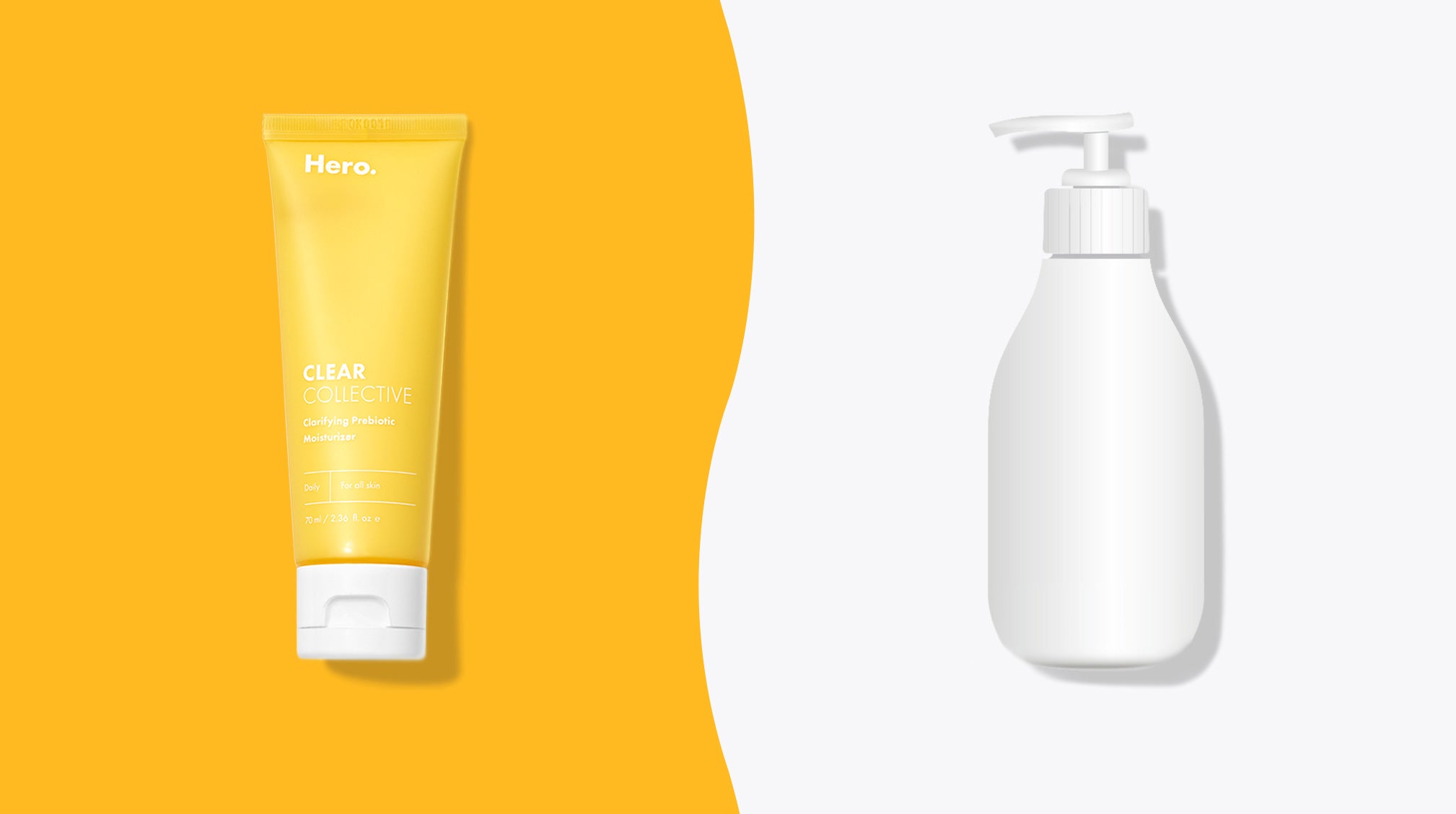
A pimple is a pimple, no matter where it is, right? Well ... not exactly. While some of the predominant factors that cause facial and body acne are the same, there are notable differences in what typically triggers the two types of acne and the products designed to treat them. Ahead, we break down exactly how the skin — and acne — on your face is different from your body and how to know which products you can use where.
Facial acne vs. body acne
Acne — anywhere on your face or body — is primarily caused by four factors: excess oil or sebum production (often triggered by hormonal fluctuations), pores that are clogged by sebum and dead skin cells, bacteria trapped in pores, and inflammation. We have pores all over our bodies, but they are most noticeable on our faces (like the ones on our nose we’re always examining) where the sebaceous glands are bigger. Like the face, the upper half of the body has many sebaceous glands, which is why body acne is often concentrated on the back and chest.
“Acne can be triggered by many factors, including genetics, stress, hormones, diet and more,” says cosmetic chemist Vanessa Thomas. “The difference between face and body acne, aside from the location, is that body acne is often caused by sweat and can be further exacerbated by clothing rubbing against the skin and creating an environment that makes acne worse.”
This sweaty, rub-a-dub-dub situation is also known as acne mechanica, which before 2020, was primarily an issue for people who work out, play sports, or wear helmets or hats. Now, many of us are all too familiar with maskne, or mask acne that is triggered by mask friction and/or the sweat and dirt trapped underneath a mask.
RELATED READ: It’s Not Just for Faces: Bacne 101
All of your skin is not the same
The thickness of your skin varies all over your body, and the skin on your face is the thinnest and most delicate of all. “The skin on the face is structurally different than the skin on the body,'' explains Dr. Adam Mamelak, an Austin-based, board-certified dermatologist. “In general, the skin on the face is thinner than the skin on the body. As well, the concentration of hair follicles, sweat and oil glands is higher in facial skin compared to that on the body. While these increased skin ‘appendages’ help repair and protect the skin on the face better than the skin on the body, they definitely have consequences when selecting and applying different skin care products to these different areas of skin.”
What to look out for
Because the skin on your face is so delicate, facial acne treatments should be much gentler than the products you would use to tackle your bacne, chest acne or buttne (yes, it's a thing).
A body acne wash is designed to fight and prevent breakouts on thicker skin, so it may be too drying and irritating to use on your face. Body lotion on the face is another no-no, as the thick formulas don’t absorb well into thin facial skin, can clog pores and ultimately lead to breakouts.

Tips for treating face and body acne
While the products you use to treat face and body acne may be different, there are some simple steps you can take to bust those blemishes, regardless of where they are located.
1. Keep it clean.
Dirt or sweat left on the surface of your skin will eventually make its way into your pores (and thus, the clogging begins). Always remove makeup and cleanse your face before bed and try to shower asap after a sweat sesh. Washing towels, sports bras and pillowcases more frequently can help eliminate the bacteria as well.
2. Try hydrocolloid patches.
There’s a good reason they are all over TikTok, Instagram and everywhere else — they work. Like, almost magically. Originally used for wound dressing, hydrocolloid creates a moist healing environment while gel-forming agents suck all of the gunk and pus out of a pimple. Look for pimple patches made from high-quality hydrocolloid designed to be used on facial skin, so you don’t end up with redness or irritation.
Hydrocolloid is one of those acne treatments that work great for both face and body! Try Mighty Patch Surface to cover larger areas on your back and chest.
3. Embrace a regular bodycare routine.
To tackle and prevent breakouts long term, you need to commit to an everyday bodycare routine. Brave Body makes body care simple, with just three daily steps: 1. Power Wash to cleanse; 2. Once-Over Toner to minimize excess oil and 3. Mineral Melt to smooth and hydrate. Add on a weekly Deep Scrub to reveal healthy-looking skin, and you’ll be looking clearer and feeling more confident in no time.
4. Don’t forget post-pimple care!
After the pus is gone, there’s typically redness, flakiness and post-blemish bumps that keep you from getting back to your pre-pimple glow. But don’t be tempted to dab on a harsh spot treatment that can do more damage than good. Using a skin soother full of replenishing antioxidants and peptides can leave your skin feeling soft, silky and renewed. Rescue Balm is one that can be used on both your face and body to push your comeback into hyperspeed.



















